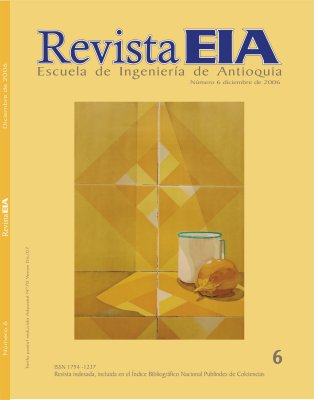EFECTOS DEL MERCURIO SOBRE ALGUNAS PLANTAS ACUÁTICAS TROPICALES
EFECTOS DEL MERCURIO SOBRE ALGUNAS PLANTAS ACUÁTICAS TROPICALES


This work is licensed under a Creative Commons Attribution-NonCommercial-NoDerivatives 4.0 International License.
Copyright statement
The authors exclusively assign to the Universidad EIA, with the power to assign to third parties, all the exploitation rights that derive from the works that are accepted for publication in the Revista EIA, as well as in any product derived from it and, in in particular, those of reproduction, distribution, public communication (including interactive making available) and transformation (including adaptation, modification and, where appropriate, translation), for all types of exploitation (by way of example and not limitation : in paper, electronic, online, computer or audiovisual format, as well as in any other format, even for promotional or advertising purposes and / or for the production of derivative products), for a worldwide territorial scope and for the entire duration of the rights provided for in the current published text of the Intellectual Property Law. This assignment will be made by the authors without the right to any type of remuneration or compensation.
Consequently, the author may not publish or disseminate the works that are selected for publication in the Revista EIA, neither totally nor partially, nor authorize their publication to third parties, without the prior express authorization, requested and granted in writing, from the Univeridad EIA.
Show authors biography
El presente artículo es una descripción de los efectos del mercurio sobre algunas plantas acuáticas tropicales y sobre los ecosistemas donde habitan. Adicionalmente, se recomienda un protocolo para realizar pruebas de toxicidad con la lenteja de agua (Lemna minor) y se presentan los resultados de los preensayos con diferentes concentraciones de sales de mercurio en condiciones de laboratorio. Se encontró que la biodisponibilidad del mercurio depende de factores que facilitan la disolución del elemento en el agua. Algunas plantas actúan como bioindicadores de la presencia de este metal en el medio al retenerlo selectvamente; mientras que otras se comportan como bioacumuladoras al tolerar su presencia y acumularlo en su estructura, y pueden dar paso a la bioconcentración a través de la cadena trófica. De acuerdo con los preensayos de toxicidad realizados con Lemna minor se sugiere que las concentraciones de sal de mercurio adecuadas para la realización de pruebas de toxicidad deben estar entre 0,01 mg/L y 10,0 mg/L.
Abstract: This paper describes the effects of mercury on some aquatic plants of the tropics and their habitats. Additionally, a protocol for toxicity tests in duckweed (Lemna minor) is recommended, and the results of preliminary tests with salts of mercury under laboratory conditions are given. It was found that mercury is in different toxicity and bioavailability forms depending on the factors that facilitate the solubilization of this element in the water. Many plants act as bioindicators because they withhold the metal selectively, while others are bioaccumulators since they tolerate and accumulate them in their structures producing biomagnification through the food web. The preliminary tests carried out in Lemna minor suggest that the appropriate concentrations for the toxicity tests are between 0,01 mg/L and 10,0 mg/L for Hg.
Article visits 522 | PDF visits 199
